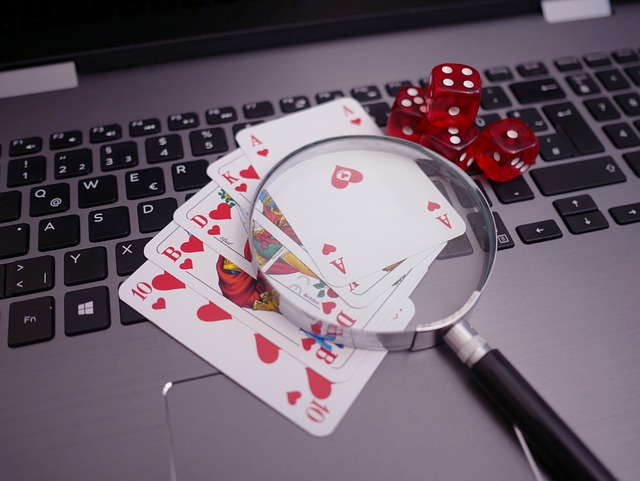Virtual reality poker is reshaping how players experience one of the most iconic casino games. Instead of staring at a flat screen, players can sit at immersive 3D tables, read avatars’ gestures, manipulate chips with hand-tracking, and interact with others in real time. This shift blends classic poker strategy with cutting-edge technology, creating a dynamic environment that feels closer to a real casino than any traditional online platform.
What Makes VR Poker Different?
Before exploring advanced features or strategies, it helps to understand what fundamentally separates VR poker from standard online poker. VR environments allow players to engage with each other through presence, motion, and interaction—not just betting buttons and chat boxes.
This shift introduces a layer of psychological depth that online poker often lacks. You’re not just playing the hands; you’re reacting to body language, social cues, and the overall table atmosphere.
Immersion and Interactivity
VR poker replicates real-world play more closely than any digital version before it. Players can observe others’ gestures, chip movements, and posture, adding new dimensions to reading opponents.
The immersive design increases emotional investment, encouraging players to remain focused on each decision. While this adds authenticity, it also raises the stakes on discipline and managing impulses.
Core Technologies Behind VR Poker

Developers use several technologies to create realistic VR poker environments. Understanding these systems helps players set expectations and identify platforms that prioritize quality and fairness.
A crucial aspect is how these technologies work together to simulate presence—your sense of being physically located in the virtual casino. Each layer impacts realism, comfort, and gameplay precision.
Motion Tracking and Gestures
Motion tracking enables players to move their hands, chips, and cards naturally. This leads to more expressive gameplay and introduces new mind-gaming possibilities.
Accurate tracking reduces misclicks and ensures that actions like folding or raising feel intuitive. It also creates opportunities for subtle tells, just like in live poker.
Spatial Audio and Environment Rendering
Spatial audio lets players hear voices and sounds from precise directions, enhancing realism. High-quality rendering improves focus by making the environment visually readable without causing fatigue.
Both elements affect atmosphere and social presence, significantly shaping the overall experience.
| Technology | What It Does | Impact on Gameplay |
|---|---|---|
| Motion Tracking | Maps hand and body movement | Natural chip handling and gestures |
| Spatial Audio | Positions sound in 3D space | Enhances tells and communication |
| Haptic Feedback | Simulates touch sensations | More realism during interactions |
| RNG Systems | Ensures fair dealing | Maintains game integrity |
These technologies collectively elevate VR poker into a sophisticated gambling environment.
Strategy Differences in VR Poker
Reading Avatars Like Real Players
In VR poker, avatars reflect actual player movement. Small gestures—like fidgeting, hesitating, or chip-shuffling—can provide insight into confidence levels.
Players must balance observing these cues with controlling their own avatar behavior to avoid giving away information unintentionally.
Managing Attention and Environment
VR demands more focus than online poker because players engage spatially rather than clicking buttons. This heightened attention can either improve decision-making or cause fatigue.
Players should take regular breaks and manage their environment to avoid sensory overload, especially during long sessions.
Advantages and Challenges of VR Poker
Before committing to VR poker, it’s useful to understand both the benefits and potential drawbacks. A short list clarifies the core trade-offs:
- Advantages: Greater immersion, richer social interaction, more realistic gameplay.
- Challenges: Hardware costs, potential motion sickness, and a learning curve for movement-based inputs.
Approaching VR poker with realistic expectations improves both enjoyment and performance.
Preparing for Your First VR Poker Session

Choosing the right platform, setting up your headset, and adjusting your playstyle all matter. Before diving in, players should become familiar with controls, table etiquette in VR, and hardware comfort settings.
A short checklist can help streamline the process:
- Configure your play area for safe movement.
- Adjust headset graphics for comfort and clarity.
- Practice in low-stakes rooms to understand controls and avatar communication.
- Observe other players’ body language before relying on your own.
With preparation, the transition to VR poker becomes smoother and more rewarding.
Conclusion
Virtual reality poker is one of the most significant innovations in modern gambling. It brings back the human elements—expression, social presence, and atmosphere—that traditional online poker often lacks. While players must adapt to new technologies and strategies, the immersive experience offers a compelling evolution of the game.
For those willing to embrace the learning curve, VR poker provides a unique blend of realism and innovation that redefines what digital poker can be.
